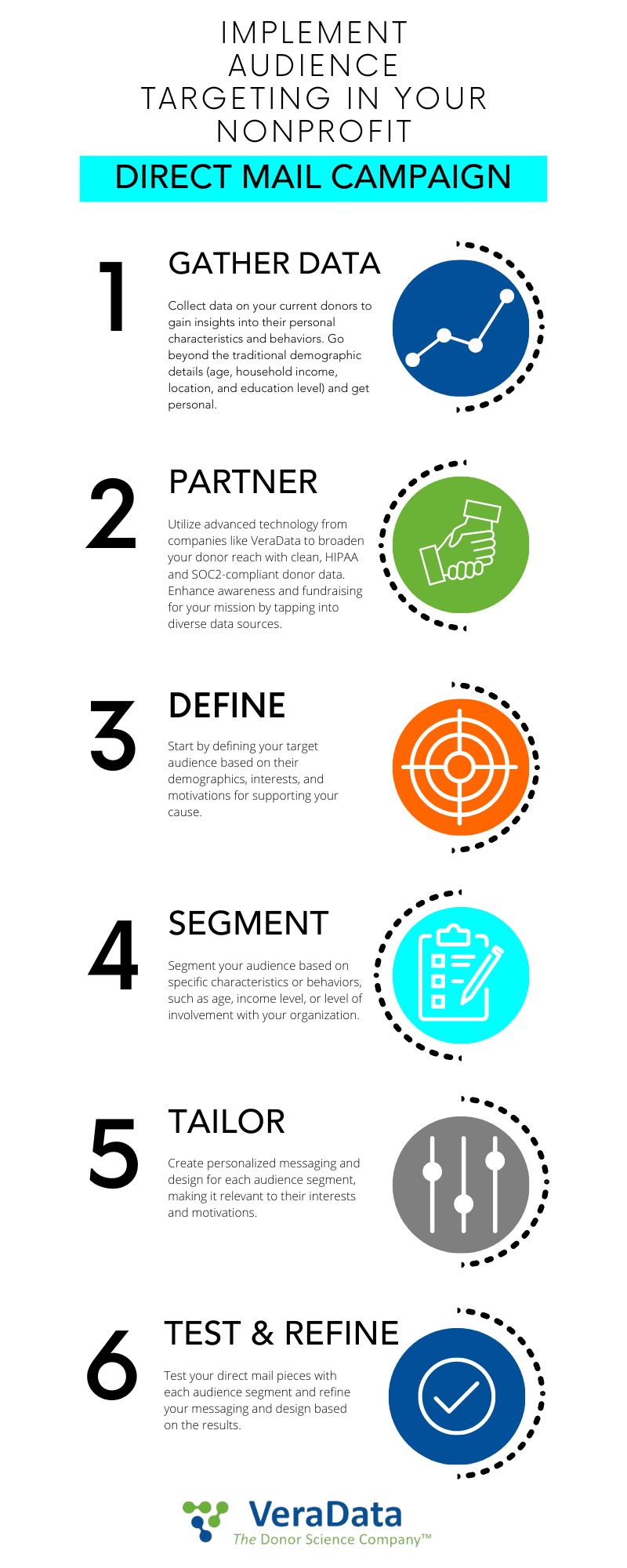News & Info
The Human Factor: Audience Targeting and Segmentation in Nonprofit Direct Mail
04/22/2024
Nonprofit organizations rely heavily on direct mail campaigns to reach potential donors and raise funds for their cause. However, with limited resources and a crowded market, standing out and connecting with the right audience can be challenging. This is where audience targeting and segmentation come into play. By understanding your target audience and segmenting them personally, you can create a more effective and custom-made direct mail campaign that resonates with your audience (and drives results!).
We will explore the role that audience targeting and segmentation play in a nonprofit direct mail campaign and how it can help you reach your fundraising goals.
Who is the Target Audience of a Nonprofit Direct Mail Campaign?
Before jumping into the importance of audience targeting and segmentation, it is crucial to understand who the target audience of a nonprofit direct mail campaign is. A nonprofit direct mail campaign’s target audience is people, actual human beings interested in supporting a specific cause or organization. These individuals may have a personal connection to the cause or have a general interest in supporting charitable organizations. They are also likely to have disposable income and be willing to donate to a cause they believe in.
Understanding Your Humans
To effectively target your audience, you must first understand who they are. This involves researching and gathering data on your current and potential donors. You can also use data from previous direct mail campaigns to gain insights into your target audience’s demographics, interests, and giving habits. Layer on Donor Science to pull in data from other sources, and you will have a cornucopia of fresh, personal data and metrics to enhance your campaign.
Some key factors to consider when defining your target audience include age, gender, net worth/income-producing assets/home value (more than income because most are over 68 years old), education level, and geographic location. You should also consider their interests, values, and motivations for supporting your cause. By understanding your target audience at this detailed, personal level, you can tailor your messaging and design to resonate with them and increase the chances of a successful direct mail campaign.
The Role of Audience Targeting in a Nonprofit Direct Mail Campaign
Audience targeting is the process of identifying and reaching out to a specific group of individuals who are most likely to respond positively to your message. By targeting the right audience, you can increase the effectiveness of your campaign and maximize your return on investment.
Personalization and Relevance
One of the main benefits of audience targeting is the ability to personalize your messaging and make it more relevant to your audience. With Ai and Machine Learning, you can better understand your target audience’s interests and motivations, and your list can be more powerfully segmented. This will allow you to create a direct mail piece that speaks directly to them and resonates with their values. This personalization can make your campaign stand out and increase the chances of a positive response.
Cost-Effectiveness
Targeting a specific audience also saves you on costs by only sending direct mail to individuals who are most likely to respond. This can help you avoid wasting resources on individuals who are not interested in your cause or organization. By targeting your audience, you can also tailor your messaging and design to be more effective, reducing the need for multiple mailings and saving on printing and postage costs. By participating in co-ops, which are typically cost-effective, you can increase your target audience size and take full advantage of existing donor and behavior data to act on without overmailing or overspending.
How to Implement Audience Targeting and Segmentation in Your Nonprofit Direct Mail Campaign
To implement audience targeting and segmentation in your nonprofit direct mail campaign, follow these steps:

- Gather the Data You Already Have
Collect data on your current donors to gain insights into their personal characteristics and behaviors. Go beyond the traditional demographic details (age, household income, location, and education level) and get personal. - Partner with a Donor Data Company to Grow Your Audience
Take advantage of companies like VeraData, which uses state-of-the-art tech and a variety of data sources to enhance and grow your potential donor reach. With clean donor data provided by HIPAA and SOC2-compliant companies like VeraData, you can expand beyond your existing relationships and boost your mission’s awareness and fundraising. - Define Your Target Audience
Start by defining your target audience based on their demographics, interests, and motivations for supporting your cause. - Segment Your Audience
Segment your audience based on specific characteristics or behaviors, such as age, income level, or level of involvement with your organization. - Tailor Your Messaging and Design
Create personalized messaging and design for each audience segment, making it relevant to their interests and motivations. - Test and Refine
Test your direct mail pieces with each audience segment and refine your messaging and design based on the results.
Conclusion
Audience targeting and segmentation play crucial roles in the success of a nonprofit direct mail campaign. By understanding your target audience and segmenting them accordingly, you can create more personalized and relevant messaging that resonates with them and drives results. Implementing these strategies in your direct mail campaign can increase response rates, save on costs, and achieve your fundraising goals.